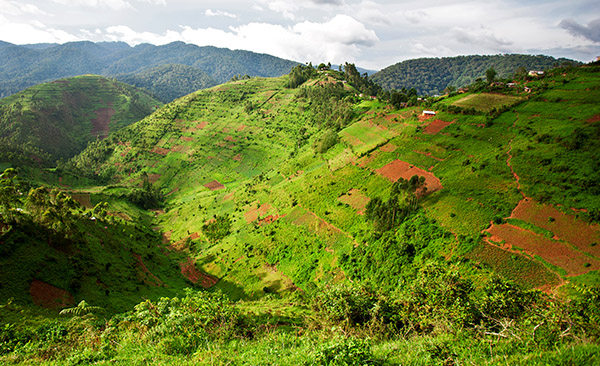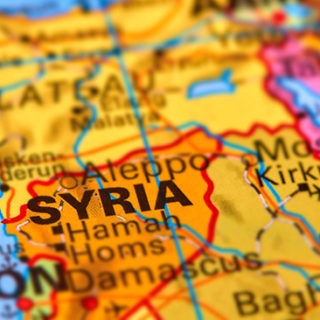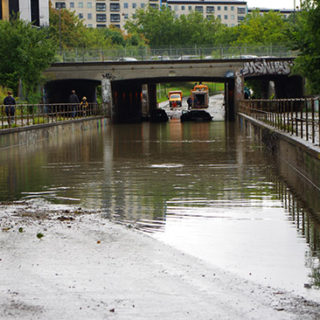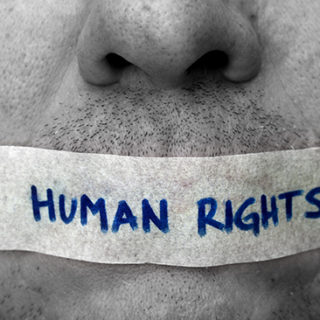How can we protect the environment in times of armed conflict?
Wars and other armed conflicts affect the environment. The damage caused can have negative consequences for people in the form of threats to their health and their access to food and clean water. At Lund University, legal scholar Britta Sjöstedt is investigating whether we can use today’s environmental legislation to reinforce environmental protection during armed conflicts.
What is allowed and what is not during armed conflict is mainly determined by the laws of war. After the Vietnam War, the laws of war were reinforced to prevent damage to the environment. But these rules have never been applied.
‟This is probably because the requirements for can be seen as environmental damage and a violation of the laws of war are incredibly high. They state that the natural environment must be exposed to extensive, lasting and serious damage – thus in principle damage as grave as that inflicted by the use of toxic substances such as Agent Orange during the Vietnam War”, says Britta Sjöstedt.
It has proven difficult to get countries to agree on new environmental rules in the context of the laws of war. One problem is defining what counts as ‟the environment”. The laws of war mention the natural environment, considered mainly to be land and vegetation – but the environment is everything around us, including air and water. It is also difficult to know what, in the environment, may prove hazardous over time, as we have seen previously with various environmental toxins such as PCB and DDT.
‟What is most important is to see the close connection between humans and the environment”, says Britta Sjöstedt. ‟In war, there are many other interests at stake, such as the immediate humanitarian aspects which take precedence over the environment. But if you eradicate vegetation or animals, for example, you don’t know whether this will lead to major damage to humans over time. If the balance in an ecosystem is disturbed, it can affect other ecosystems in turn, with consequences on the climate. As the environment becomes increasingly sensitive and exposed, the potential damage caused by armed conflict grows.”
‟I believe that environmental law can be a good instrument for green diplomacy.”
International law which includes both environmental law and the laws of war. In 2010, the UN’s commission on international law decided to review and develop the rules to see how environmental protection could be improved before, during and after conflicts.
‟If you read the laws of war and environmental law together, you can reinterpret the laws of war in such a way as to integrate a more modern view of the environment. For example, environmental law focuses more on reducing the incidence of irreparable damage or damage that can affect future generations. This allows us to limit certain damage caused in armed conflicts, damage which is not covered in the laws of war”, says Britta Sjöstedt.
What is unique to environmental issues is that the warring parties often have a common interest. If, for example, all parties realise that an area must be protected in order to preserve it as a human habitat, they may be motivated to cooperate. Another advantage of environmental law is the existence of institutions which can often be on site and take decisions on how the parties are to uphold the environmental conventions.
In the Democratic Republic of Congo, Britta Sjöstedt studied a pilot project implemented under the World Heritage Convention, negotiated under the UN body Unesco. What is unique about this project is that, while most organisations have left the conflict zones, Unesco, together with a few partners, has remained on location to incorporate protection of world heritage in parks such as Virunga in eastern Congo.
‟On the matter of the park in Virunga, Unesco invites both the rebels and the Congolese government to talks and acts as a mediator for how to protect the park and the endangered animal species that inhabit it, such as the mountain gorillas”, explains Britta Sjöstedt.
Unesco’s ambition has been to keep the conflict out of the park, which has not been successful. However, the organisation has managed to maintain the presence of park rangers by ensuring that they get paid and are granted a kind of immunity from attacks, despite being armed themselves. With rangers in place, Unesco enables the continued protection of the parks against poaching and people chopping down forests for fuel. However, this is not entirely uncomplicated. There are still problems with various rebel groups entering the park, and many park rangers are still shot and killed in their work of protecting the mountain gorillas and other animals from poachers.
‟What is important is that we have succeeded in maintaining some kind of instrument to protect the parks in the Democratic Republic of Congo during the decades in which the conflict periodically flared up. In the beginning of the hostilities, the number of mountain gorillas dropped drastically but, since Unesco got involved, the number has begun to increase again.”
Today, quite numbers of wars are waged about natural resources, including conflicts in the Central African Republic, Sudan, Liberia and Sierra Leone. Britta Sjöstedt believes that, as the environment is increasingly exposed and vulnerable, we will see environmental damage having increasing consequences on human life. This could lead to further conflicts but also to more parties becoming interested in protecting the environment in everyone’s interest.
‟I believe that environmental law can be a good instrument for what we refer to as environmental diplomacy, or green diplomacy”, says Britta Sjöstedt. There are often shared interests which are distinct from political tensions, with the potential to enable the creation of a more neutral forum to start negotiating. There are several examples of warring parties continuing to cooperate to protect an important waterway. However, whether this can be implemented depends very much on the nature of the conflict, who the agents are and what natural values are involved.
Text: Pia Romarea
Facts
-
International law
-
International law consists of all the international laws and principles which regulate how states and other international agents are to cooperate and how they may and may not act towards one another.
International law includes things like:
– The laws of war governing armed conflict
– Human rights law
– International environmental law
– Maritime law, space law, treaty law, international use of force
Source: http://www.regeringen.se/regeringens-politik/demokrati-och-manskliga-rattigheter/folkratt/folkrattsliga-bestammelser/ 20 February 2017
-
World Heritage Convention
-
The Unesco 1972 convention on protection of the world’s natural and cultural heritage is the organisation’s best known convention.
Source: http://www.unesco.se
-
Unesco
-
Unesco (United Nations Educational, Scientific and Cultural Organisation) is the UN organisation for promoting peace through increased cooperation between member countries within the fields of education, science, culture and communication/information.
Source: http://www.unesco.se
-
Agent Orange
-
Agent Orange is the name of a herbicide. It is chemically similar to growth hormone and kills plants by disrupting their metabolism.
-
The role of the environment
-
The role of the environment can be significant throughout the entire cycle of conflict. For example:
– The environment as a contributing cause of conflicts (drought, shortage of natural resources or an abundance of natural resources over which parties wish to gain control).
– The environment as a silent victim in the conflict (weapons that spread toxins, attacks on factories leading to emissions) or as a weapon in itself (burning crops, poisoning waterways or using the forces of nature to wage war by creating floods, droughts, tsunamis, etc.).
– The environment as an obstacle in the peace process (if the environment has been destroyed, it is no longer possible to live there).
-
History
-
Historically, there is nothing new in wanting to protect the environment in case of conflict. Attacking the enemy’s environment – and therefore also protecting one’s own environment from attack – has been an aspect of warfare since Antiquity.
After the Second World War, international law was mainly focused on civil society. The laws of war, which are the part of international law dealing with armed conflict, only indirectly protected the environment, for example through the prohibition of chemical weapons or shielding civil property from attacks. The prohibition of chemical weapons was justified by the fact that their use can be detrimental to both parties.
After the Vietnam War 1957–1975, in which the US sprayed the herbicide Agent Orange on a large scale to defoliate the jungle and limit the access of the Vietnamese to edible plants, a debate arose on how much we should protect the environment in case of armed conflict. This was at the inception of environmental law when the UN held its first environmental conference in Stockholm. On the grounds that one can destroy a great deal for a very long time, the first, very strict, rules specifically to protect the environment were introduced into the laws of war.
Then came Iraq’s invasion of Kuwait in the 1990s. In connection with that conflict, several oil wells were set on fire leading to large amounts of crude oil leaking into the Persian Gulf. During the Kosovo war at the end of the 90s, NATO bombed factories in Belgrade, causing toxic substances to leak into the Danube. After these events, discussions arose once again on how long-lasting but low-intensity effects can destroy a great deal and also compromise peace-building.
In 2010, the UN’s international law commission found previous environmental laws to be inadequate. In order to develop environmental protection before, during and after conflicts, a review was decided of these environmental rules and their potential use together with provisions in international environmental law, for example.








